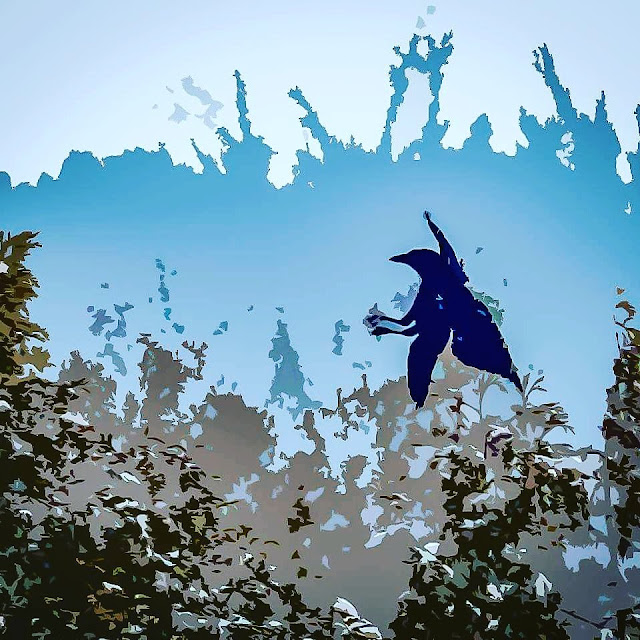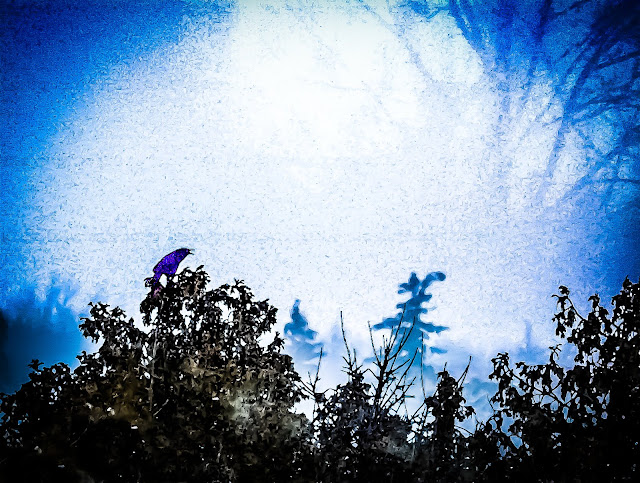Macro shots taken with a Canon T6i DSLR with the Canon macro lens.
Rainbows taken with the same camera and a the kit lens:
from Blogger https://ift.tt/3wMbMT7
via IFTTT

Tim King's homepage with images and writing about technology, education, visual art and motorcycles!
Macro shots taken with a Canon T6i DSLR with the Canon macro lens.
Rainbows taken with the same camera and a the kit lens:
from Blogger https://ift.tt/3wMbMT7
via IFTTT
Macro shots of butterflies & flowers from our local butterfly conservatory. A welcome break from the crippling cold of a Canadian winter.
All done with the Olympus PEN EPL5 micro four thirds digital camera, most using the stock lens.
from Blogger http://ift.tt/2Cb3qrx
via IFTTT
It takes patience and a lot of photos, but catching a bird just right never gets old.
| A low light shot with lots of noise in it, but some photoshopping saved it. |
from Blogger http://ift.tt/2Db6lAD
via IFTTT
These are some video screen grabs from the long way home commute from work last week. Windy and cool, but still up near ten degrees Celsius with bright, winter sunshine. The roads were relatively sand and salt free thanks to days of rain and floods.
The Ricoh Theta 360 camera is wrapped around the mirror with a Gorilla Pod. A 360 video clip starts it off followed by some Adobe Lightroom heavily tweaked screen grabs aimed at creating a more abstract feel.
February Ride – Spherical Image – RICOH THETA
All the screen grabs with various modifications can be found in this album.
My last ride was November 28th. I used the same 360 camera then, but didn’t have the Gorilla Pod at that point so those ones are all hand held.
from Blogger http://ift.tt/2oO3qZf
via IFTTT
Following that adage I looked for a phone with a good camera this time around. The OnePlus5 has an excellent camera as far as hardware goes, but the software still has some catching up to do. Fortunately OnePlus seem committed to regular updates.
Walking home on Dec 23rd, one of the darkest days of the year, I took a post-sunset shot of the Grand River thinking it wouldn’t come out at all. Not too bad for a very low light shot. Similarly the multi-shot night time hockey gif taken on winter solstice in full darkness.
The photo of my lovely wife and her colleagues singing was also taken in a dark room. It was post processed in Paper Artist, my favourite on-phone photo editing app.
from Blogger http://ift.tt/2BuS6pS
via IFTTT
A wide range of imaging from the summer of 2020 into the autumn stretches out beneath you. On-bike photos usually taken with a Ricoh ThetaV firing automatically and attached to the bike with a tripod. Close-up/macros usually done with a Canon T6i DSLR with a macro lens. Drone shots taken with a DJI Phantom4Pro drone. Other shots taken with a OnePlus5 smartphone when I had no other choice (the best camera is the one you have with you). Most are touched up in Adobe Photoshop or Lightroom depending on where I am and how much time I’ve go for post processing. Some of them are very post processing heavy verging on digital illustration rather than photography.
The stop motion video was hundreds of photos taken with the 360 camera on bike and then composited into a stop-motion film in Premier Pro. It’s a tricky process you can learn more about here if curious. The SMART Adventures videos are using a waterproof/shockproof action camera from Ricoh.
from Blogger https://ift.tt/2GGT7m4
via IFTTT
May floral, macro photography using the Canon T6i Rebel SLR using the kit lens on the overcast shots and the macro lens on the sunny ones.:
from Blogger http://bit.ly/2JYWDsH
via IFTTT
360° motorcycle photos taken with a Ricoh Theta attached to the windshield with an octopus mount (see how to take photos like these here). They were cleaned up in Adobe Lightroom. Various digital edits to abstract the images done in Paperartist and touched up in Lightroom.
Photos first: the Theta photos came out dark, but Lightroom was able to make them look HDR with a click of the auto setting:
You can see the shutter struggling to catch enough light there…
I then took the Lightroom edits and ran them through PaperArtist beforre touching them up again. So the workflow here is photo in the Theta, download to desktop, edit in Lightroom, upload to phone for PaperArtist edit, download back to desktop for final lightroom touch up.
The sunset the next night was another stunner, but I was on the deck with the Oneplus5 smartphone for these ones…
from Blogger https://ift.tt/2CVFehZ
via IFTTT
A crow playing in the wind on a snowy Saturday afternoon in February prompted me to get the Canon T6i out. These were taken with the 55-250mm lens. The original photos are so atmospheric that I started posterizing them in Photoshop and then gave Lightroom a try. I’ve never used it before and was curious to see what it could do. As a simple image editor it can do quick and effective image touch-ups. LIghtroom did a nice job of making the images posterized in Photoshop pop…
 |
| The original image: f/8 1/500 sec, ISO 200 -1 Exposure, 250mm |
 |
| Posterized (colour reduced) in Photoshop |
 |
| Details tweaked in Lightroom |
 |
| Original image f/7.1, 1/400 sec. ISO 100 250mm brightened in curves in PS. |
 |
| The crow colourized and layered with the background monochromed in black & white |
 |
| After some tweaking in Lightroom. The tree reflection caught in the window could have been washed out, but I liked how it came out with the vignetting. I’m reading Neil Gaiman’s Norse Gods at the moment and this reminds me of Odin’s crow Huginn and Yggdrasil, the world tree. |
 |
| Original photo: f/10, 1/800sec, ISO 200, -1 stop, 250mm |
 |
| Posterized in Photoshop… |
 |
| Touched up in Lightroom… |
from Blogger http://ift.tt/2od93jk
via IFTTT
Just got the Canon macro lens for the Rebel T6i. You can get lost in an icicle with this thing!
…eyeballs!:
… and some morning glory:
from Blogger https://ift.tt/2zSjyyZ
via IFTTT